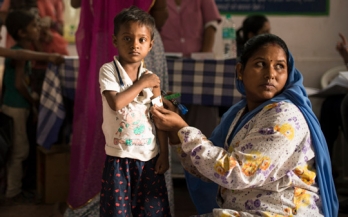As COVID-19 continues to impact millions of lives and jobs around the world, it is also making our global food system increasingly vulnerable. The poverty, malnutrition and food insecurity that were already challenges before the pandemic – with 820 million people chronically hungry in 2018 – are set to grow as a result of it.
Since the Covid-19 pandemic and associated control measures began affecting food systems around the world, many of us who care about nutrition and livelihoods have been thinking anxiously about food prices: would they be affected? If so, how badly, for which foods, and for how long? Food prices are important for several reasons.
"Biblical". That was the word that the world’s press needed to (finally) run stories about the impacts of the COVID-19 crisis on food and nutrition. Thank you to the Executive Director of the World Food Programme, David Beasley, for the turn of phrase.
With the spread of COVID-19 we find ourselves plunged into a global health crisis. By most accounts we are only at the early stages of the pandemic so it is going to reshape economy, society and politics, probably permanently.
Today marks International Women’s Day – an occasion to reflect on the contributions of women worldwide and, for GAIN, to reflect on how we are working to engage and empower women through our work. Over the past decade, there has been growing focus on empowering women in agriculture - and with good reason. Women’s participation in agriculture varies by region, but in many African countries, women make up close to half of the agricultural labour force.
The clock is ticking. We are just 10 short months from the Nutrition for Growth Summit (N4G) in Japan in mid-December. Many people are working hard with the Government of Japan and partners, allies and colleagues to energise the nutrition base - and beyond - about the Summit and to develop commitments that will accelerate improvements in nutrition.
We use dietary intake surveys of what people eat a lot. They are needed to support the design, monitoring, and evaluation of food-based nutrition programmes that aim to improve dietary adequacy in populations. In a world where over one third of people have unhealthy diets, getting this right matters.
This month GAIN organised an event, in partnership with the Scaling Up Nutrition Movement (SUN) and the Global Health Centre at the Graduate Institute in Geneva, on urbanisation and nutrition. While there have been some voices calling for these two issues to come together, this has not really happened, although things now seem to be changing.
Has the food and nutrition policy community adapted to the new urban realities and, if not, how should they? This was the topic of the launch of the new IFPRI Global Food Policy Report on urbanisation, food security and nutrition.
At GAIN we strive for sustained impact. Our aim is to improve the consumption of nutritious and safe food for all, especially the most vulnerable. We work hard to make sure our programming, policy and knowledge work form a virtuous circle that generates that impact. Hence, we take knowledge seriously: as producers, but also as consumers. Here is our end-of-year list for the articles, books, blogs, videos and reports that have influenced our thinking this year.










